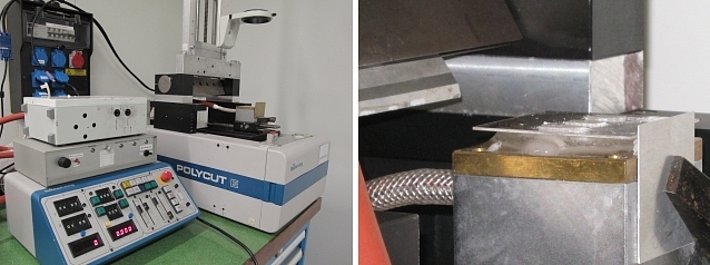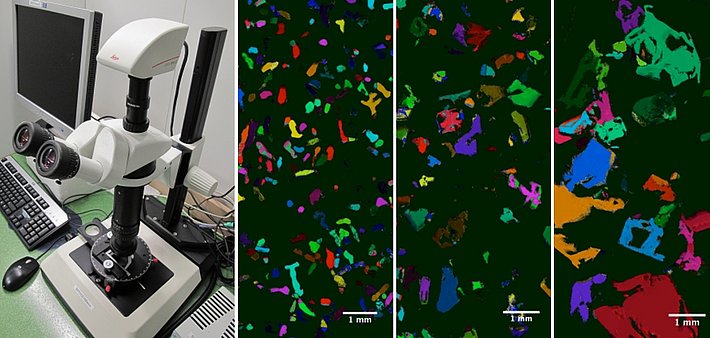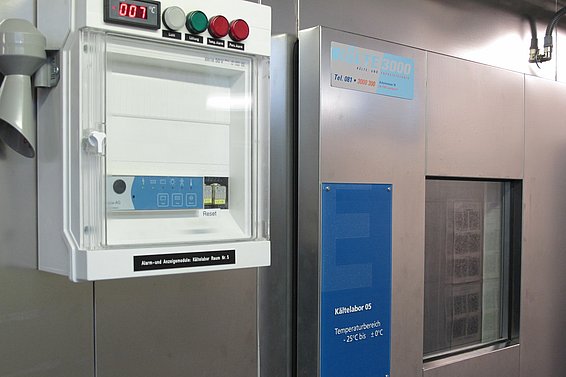
Cold chambers ¶
Snow in 3D – with the aid of computed tomography in the cold laboratory, nowadays we can not only scan snow, but also reconstruct its three-dimensional structure, and even observe the changes that take place during metamorphism.
The complex ice architecture of snow is invisible to the naked eye. For this reason, in collaboration with the Swiss National Science Foundation, in 2002 the SLF became the first institute worldwide to install a micro-computed tomography (micro-CT) scanner, built by the Swiss company Scanco Medical, in a cold laboratory.
The SLF possesses five cold chambers (Fig. 1) that remain in service throughout the year. They enable us to experiment with snow in precisely defined ambient temperatures at any time of year. Each cold chamber operates autonomously at different temperatures in the range from ‑35 °C to 0 °C. We use them for a wide variety of purposes, including the making of nature-identical snow; the conduct of mechanical, optical and thermodynamic experiments; producing computed tomography scans; and machining (by sawing, turning and drilling) and storing snow samples.
Working in low temperatures between -35°C and 0°C calls for warm clothing, such as a full-body down suit, gloves, thermal boots and a beanie. In such conditions, practically every instrument has to be designed specifically for continuous duty. Examples of such instruments are provided below.
Alongside basic research that seeks to answer questions concerning the physical properties of snow in connection with its material structure, we also address specific industrial topics. We investigate the behaviour of car tyres on snow, for example, or the formation of crystals in ice cream.
Climatic chamber ¶
The cold chambers are complemented by a climatic chamber in which we can regulate not only sub-zero and above-zero temperature zones, but also the relative humidity and amount of light. In the chamber we cultivate plants, for instance, for use in soil erosion tests in the wind tunnel (Fig. 2). We also grow plants for examining the influence of roots on slope stability.
Snow production
Thanks to the cold laboratories, we can work at temperatures below 0 °C in the summer as well. For a long time, however, the available snow imposed restrictions. The more dendritic the crystal shapes, the faster the snow undergoes transformation, even in the low temperatures maintained in the cold chambers. Subsequent to the development of the Snowmaker, we have been able in recent years to produce our own nature-identical snow in the lab, so that we no longer depend entirely on natural snowfall. We can also cultivate other types of snow in the laboratory. We use metamorphism boxes, for example, to control the snow’s transformation by setting different temperature gradients. The walls of the box are thermally insulated, and the temperature of the base is controlled by a hotplate. This apparatus even allows us to produce artificial weak layers.
Polycut microtome
This is a tool used to cut extremely thin slices of snow specimens, known as sections, with a thickness of as little as approx. 50 µm. These provide a two-dimensional picture of the snow structure that can be analysed in a variety of ways, depending on the topic. Under the microscope and using polarisation filters, individual snow grains and the grain boundaries can be made visible, and the orientation of the crystals can be determined with a fabric analyser.





